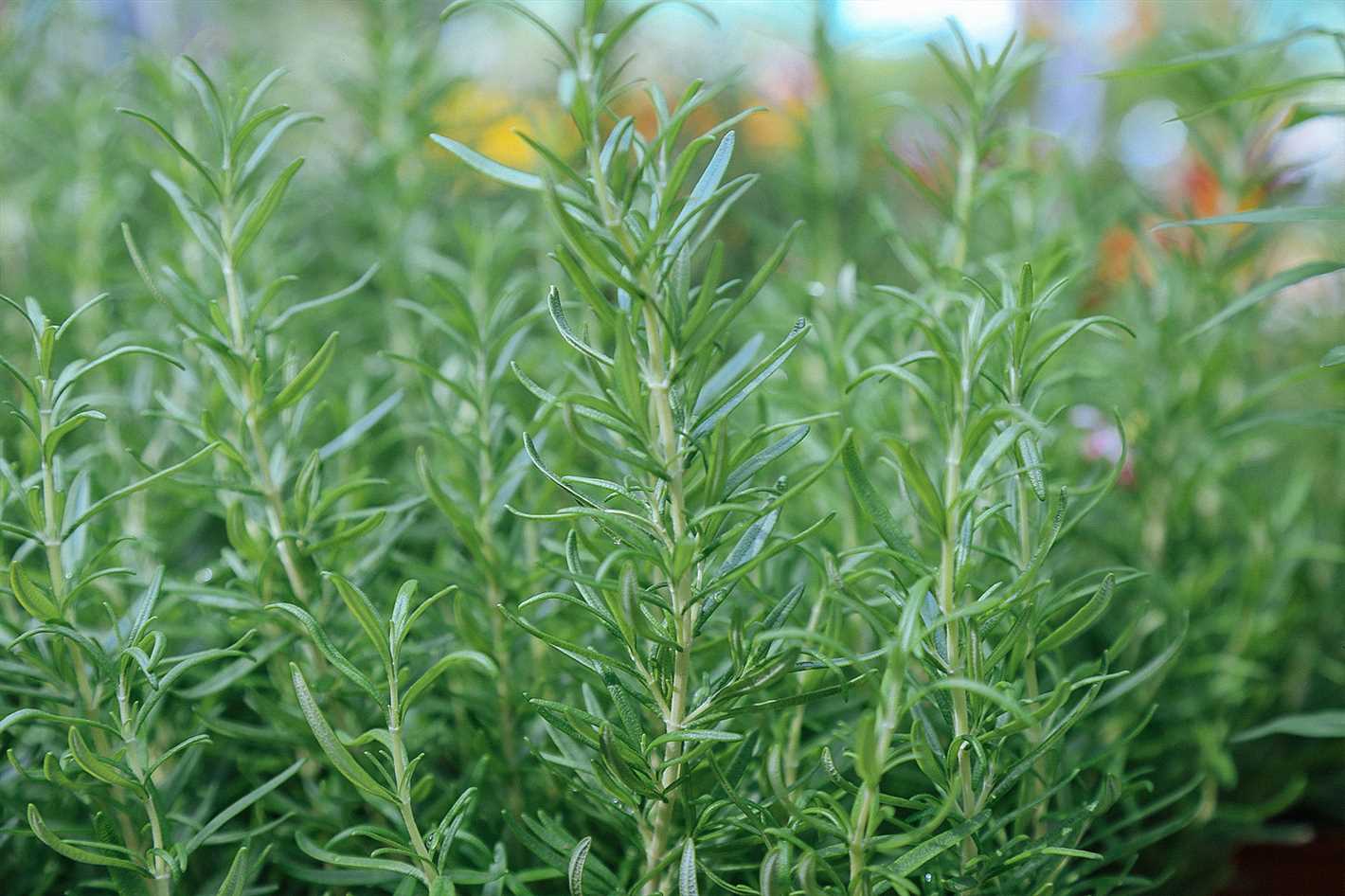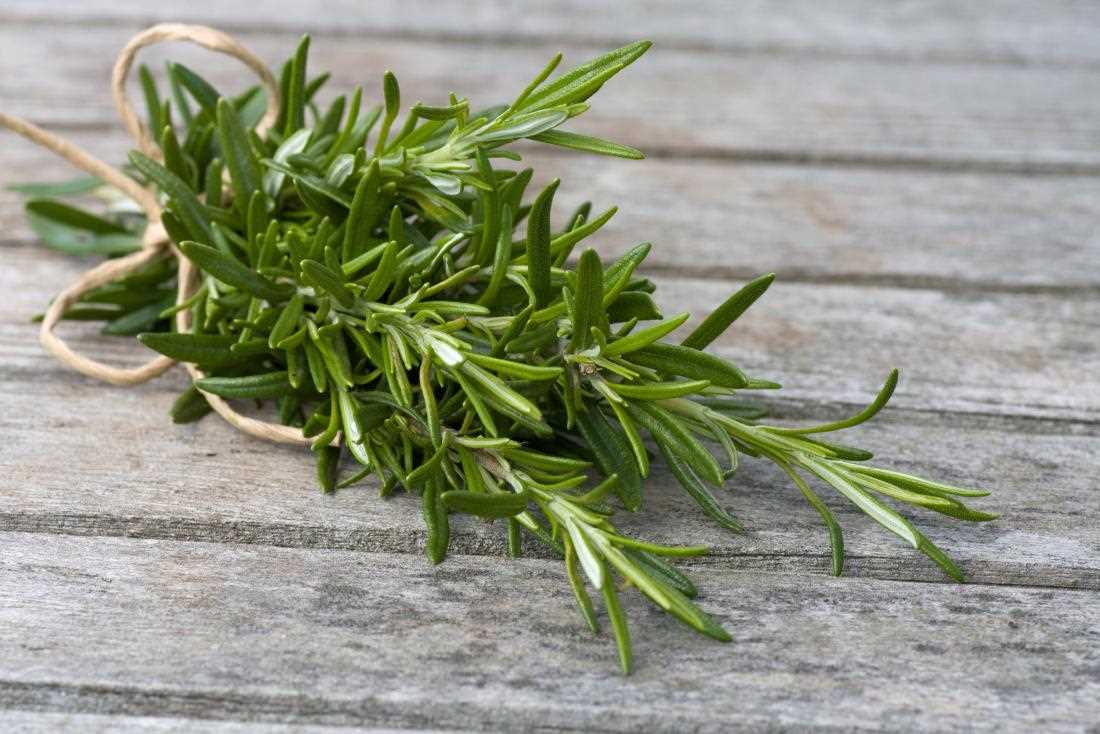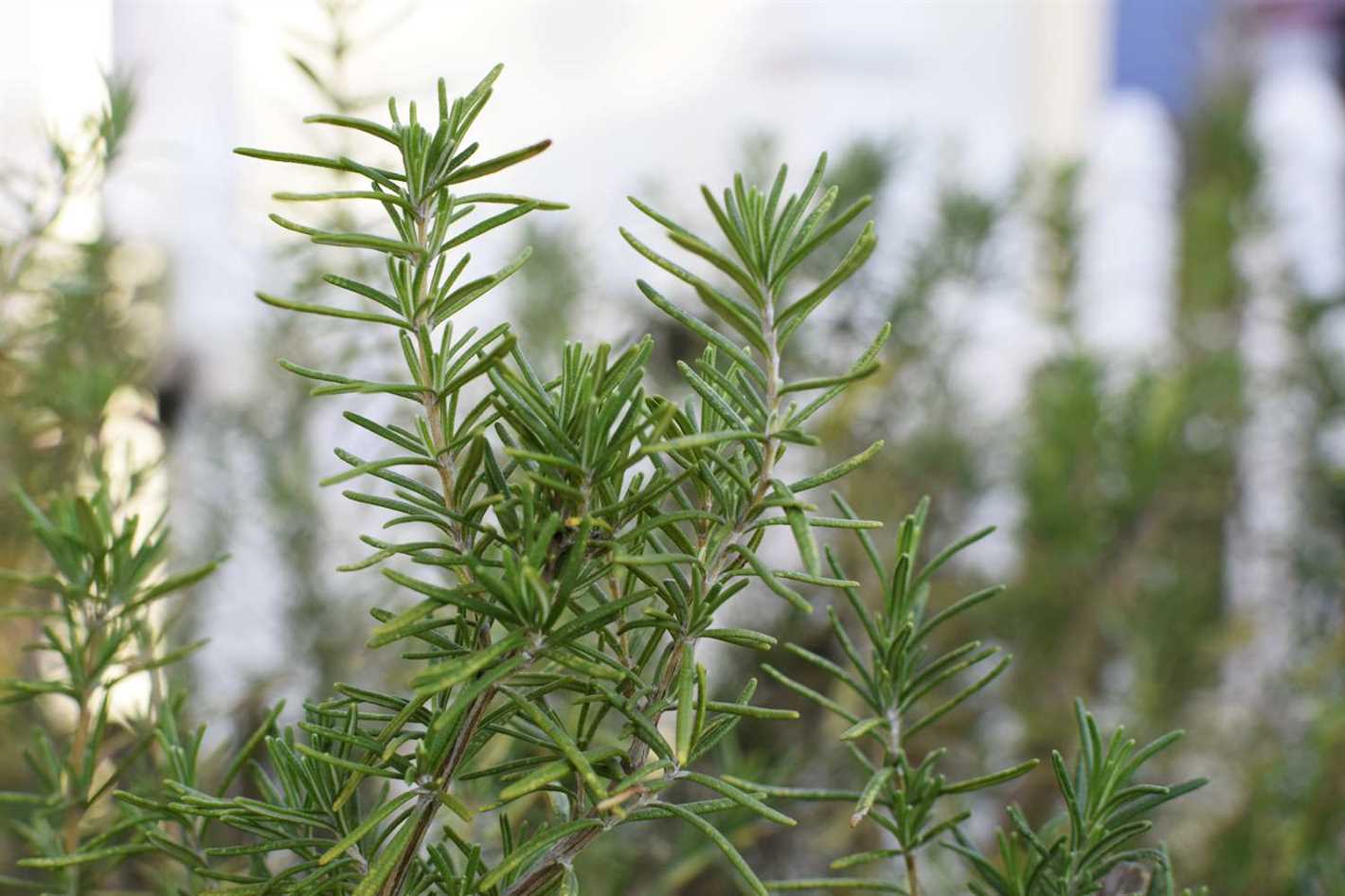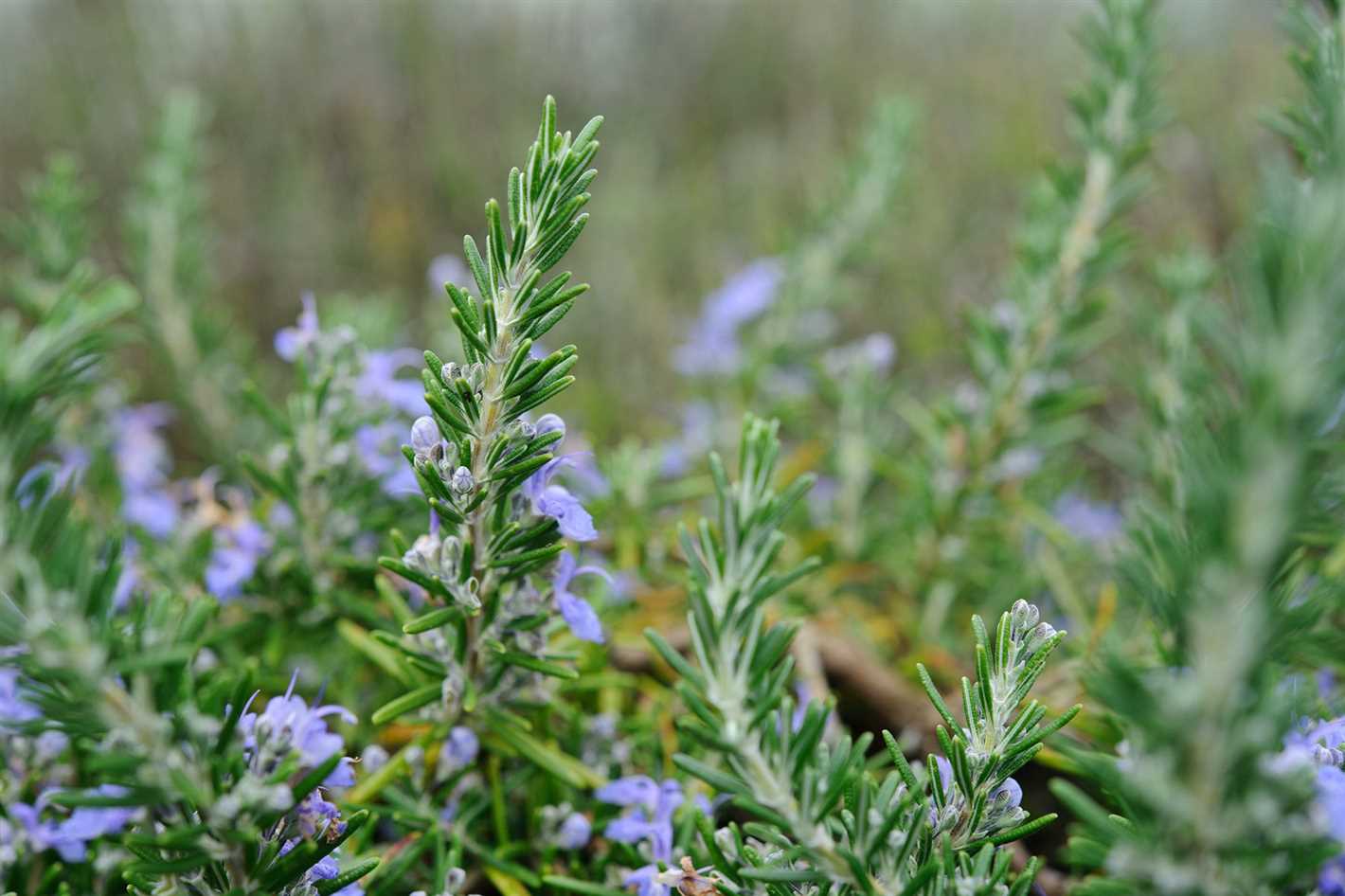- Guide to Growing Rosemary at Home
- 1. Choose the Right Location
- 2. Prepare the Soil
- 3. Planting Rosemary
- 4. Watering and Care
- 5. Harvesting
- 6. Winter Care
- Why You Should Grow Rosemary
- 1. Easy to Grow
- 2. Wonderful Aroma
- 3. Culinary Uses
- 4. Medicinal Properties
- 5. Attracts Beneficial Insects
- Choosing the Right Location for Your Rosemary
- Sunlight Requirements
- Temperature and Climate
- Soil Conditions
- Protection from Wind
- Considerations for Container Gardening
- Preparing the Soil for Rosemary Planting
- 1. Choose a Well-Draining Location
- 2. Clear the Area
- 3. Loosen the Soil
- 4. Amend the Soil
- 5. Test the Soil pH
- 6. Apply Fertilizer
- 7. Water the Soil
- Planting Rosemary from Seed or Cutting
- From Seed:
- From Cutting:
- Caring for Your Rosemary Plant
- 1. Watering
- 2. Sunlight
- 3. Temperature
- 4. Pruning
- 5. Fertilizing
- 6. Pests and Diseases
- 7. Harvesting
- 8. Winter Care
- 9. Companion Planting
- 10. Enjoying Your Harvest
- Harvesting and Using Your Homegrown Rosemary
- 1. Timing:
- 2. Cutting:
- 3. Washing:
- 4. Storage:
- 5. Using:
- Common Pests and Diseases of Rosemary
- Pests:
- Diseases:
- Tips for Maintaining Healthy Rosemary Plants
- 1. Choose the right location:
- 2. Water sparingly:
- 3. Prune regularly:
- 4. Fertilize sparingly:
- 5. Protect from frost:
- 6. Harvest regularly:
- Q&A:
- What are the benefits of growing rosemary at home?
- How do I choose the right location for growing rosemary?
- What type of soil is best for growing rosemary?
- How often should I water my rosemary plant?
- Can I propagate rosemary from cuttings?
- Video: How to Grow Rosmarinus Officinalis From Cuttings Fast and Easy
If you love cooking with fresh herbs, growing rosemary at home is a must. This versatile and aromatic herb not only adds a distinctive flavor to your dishes but also has numerous health benefits. Whether you have a large garden or a small balcony, rosemary is easy to grow and requires minimal maintenance.
Step 1: Choose the Right Location
Before planting rosemary, it’s important to find the right spot in your home or garden. Rosemary thrives in full sun, so look for an area that gets at least six hours of direct sunlight every day. It’s also important to choose a well-draining location as rosemary does not like to sit in wet soil.
Step 2: Prepare the Soil
Next, prepare the soil for planting. Rosemary prefers slightly alkaline soil with a pH between 6 and 7. If your soil is too acidic, add some lime to raise the pH. Make sure the soil is well-draining by adding organic matter like compost or sand. This will help prevent water from pooling around the roots and causing root rot.
Step 3: Plant the Rosemary
Once the soil is prepared, dig a hole slightly larger than the root ball of your rosemary plant. Gently remove the plant from its container and place it in the hole. Make sure the top of the root ball is level with the soil surface. Backfill the hole with soil, slightly firming it around the plant.
Tip: If you’re planting multiple rosemary plants, space them at least 2 feet apart to allow for airflow and prevent the spread of diseases.
Step 4: Water and Care for Your Rosemary
After planting, water your rosemary thoroughly and keep the soil evenly moist for the first few weeks until the plant becomes established. Once established, rosemary is relatively drought-tolerant and only needs to be watered when the soil feels dry to the touch.
Note: Avoid overwatering, as this can lead to root rot.
Prune your rosemary regularly to keep it bushy and compact. Harvest the leaves as needed, and enjoy the fresh and aromatic flavor of this delightful herb in your favorite recipes!
Guide to Growing Rosemary at Home
Rosemary is a delightful herb that is not only known for its culinary uses, but also for its pleasant fragrance and ornamental value. With just a little effort, you can grow your own rosemary at home and enjoy its many benefits. Here is a step-by-step guide to help you get started.
1. Choose the Right Location
- Rosemary thrives in full sun, so choose a location that receives at least 6-8 hours of direct sunlight each day.
- Ensure that the soil is well-draining, as rosemary does not like to sit in wet or soggy conditions.
2. Prepare the Soil
- Before planting, loosen the soil in the chosen location with a garden fork or tiller.
- Remove any weeds or rocks that may impede root growth.
- If the soil is heavy clay, consider adding some organic matter or sand to improve drainage.
3. Planting Rosemary
- Dig a hole that is slightly larger than the root ball of your rosemary plant.
- Place the plant in the hole, ensuring that the top of the root ball is level with the surrounding soil.
- Backfill the hole with soil and gently firm it around the plant.
- Water the plant thoroughly after planting.
4. Watering and Care

- Water your rosemary plant regularly, but be careful not to overwater.
- Allow the soil to dry out slightly between watering to prevent root rot.
- Fertilize your rosemary plant once a month with a balanced fertilizer.
- Trim back any dead or woody growth to promote new growth and maintain the shape of the plant.
5. Harvesting

- You can start harvesting rosemary leaves once the plant is well-established, usually after about 3-4 months.
- Simply snip off the desired amount of leaves, either fresh or dried, and use them in your culinary creations.
- Remember to leave at least 1/3 of the plant intact to ensure continued growth.
6. Winter Care
- Rosemary is a hardy plant, but it may require some extra protection during harsh winter conditions.
- If you live in a cold climate, consider covering your rosemary plant with a layer of mulch or burlap to insulate it from freezing temperatures.
- Alternatively, you can bring potted rosemary plants indoors during the winter months.
By following these simple steps, you can successfully grow rosemary at home and enjoy the fresh flavor and fragrance of this versatile herb all year round.
Why You Should Grow Rosemary
Rosemary is a versatile and flavorful herb that offers a wide range of benefits to those who choose to grow it at home. Whether you have a large garden or just a small space on your balcony, here are several reasons why you should consider growing rosemary:
1. Easy to Grow
One of the main reasons why you should grow rosemary is its ease of cultivation. Rosemary is a hardy herb that thrives in a variety of climates and soil conditions. It requires minimal care and maintenance, making it perfect for beginner gardeners or those with busy schedules. Plus, rosemary is a perennial plant, meaning it will come back year after year with minimal effort on your part.
2. Wonderful Aroma
Another reason to grow rosemary is for its delightful fragrance. The leaves of the rosemary plant emit a strong, refreshing scent that can uplift your mood and make your garden smell amazing. You can also bring a sprig of rosemary indoors to enjoy its aroma in your home. The fragrance of rosemary is known to have a calming effect on the mind and can even help improve memory and concentration.
3. Culinary Uses
Rosemary is a popular culinary herb that is used in a wide variety of dishes. Its distinctive flavor adds a delicious and aromatic element to meats, roasted vegetables, soups, and even bread. By growing your own rosemary, you can have a fresh supply of this versatile spice right at your fingertips. You’ll never have to worry about running out or buying expensive dried rosemary from the store again.
4. Medicinal Properties
In addition to its culinary uses, rosemary also has several medicinal properties. It is rich in antioxidant compounds that can help boost the immune system and protect against chronic diseases. Rosemary has also been used for centuries as a natural remedy for digestive issues, headaches, and muscle pain. You can make your own rosemary tea or extract to enjoy these health benefits.
5. Attracts Beneficial Insects
Lastly, growing rosemary can attract beneficial insects to your garden. Bees, butterflies, and other pollinators are attracted to the purple flowers of the rosemary plant. By providing them with a source of nectar, you are not only helping these important insects but also supporting the overall health of your garden ecosystem.
In conclusion, growing rosemary at home is a rewarding and practical choice. Not only is it easy to grow and maintain, but it also offers a wonderful aroma, culinary uses, medicinal properties, and attracts beneficial insects. With all these benefits, it’s time to grab a pot and start growing your own rosemary today!
Choosing the Right Location for Your Rosemary
When it comes to growing rosemary, choosing the right location is essential for the success of your plant. Rosemary is a Mediterranean herb that loves warmth and sunlight, so you’ll want to find a spot in your garden that meets these conditions.
Sunlight Requirements
Rosemary thrives in full sunlight, so it’s important to choose a location that receives at least 6 to 8 hours of direct sunlight per day. Without enough sunlight, the plant may become weak and leggy, and the flavor of the leaves may also be affected.
Temperature and Climate
As a Mediterranean herb, rosemary is best suited for warm climates. It prefers temperatures between 70-80°F (21-27°C), so make sure your chosen location provides enough warmth. If you live in a colder climate, you can grow rosemary in pots and bring them indoors during the winter months.
Soil Conditions
Rosemary prefers well-draining soil that is slightly acidic to neutral. It doesn’t tolerate soggy conditions and may suffer from root rot if the soil is too heavy and retains too much moisture. If your soil is heavy, consider adding organic matter like compost or sand to improve drainage.
Additionally, rosemary is tolerant of a wide range of soil types, including sandy, loamy, and clay soils. However, it’s important to note that the plant may not grow as well in heavy clay soils.
Protection from Wind
While rosemary loves sunlight, it can be susceptible to wind damage. Strong winds can dry out the leaves and cause the plant to become stressed. To protect your rosemary, consider planting it in a location that is shielded from strong winds, such as near a wall or a fence.
Considerations for Container Gardening
If you don’t have access to an ideal garden spot, or if you simply prefer to grow rosemary in containers, you have that option as well. Growing rosemary in pots allows you to control the growing conditions more easily. Choose a container with drainage holes and use a well-draining potting mix.
Place the container in a sunny location, such as a patio or balcony, and make sure to water it regularly as containers tend to dry out more quickly than garden beds. Keep in mind that you may need to bring the container indoors during the winter months if you live in a cold climate.
By selecting the right location for your rosemary plant, you’ll create the optimal growing conditions for this delicious herb. Whether you choose to grow it in your garden or in containers, your rosemary plant will reward you with its aromatic leaves and flavorful taste.
Preparing the Soil for Rosemary Planting

Before planting rosemary, it is important to prepare the soil to ensure optimal growth and health of the plant. Follow these steps to prepare your soil for planting rosemary:
1. Choose a Well-Draining Location
Rosemary thrives in well-draining soil, so it is essential to choose a planting location that offers good drainage. Avoid areas with heavy clay soil that tends to hold water and become waterlogged.
2. Clear the Area
Remove any existing plants, weeds, or debris from the planting area. Clear the area thoroughly to create space for the rosemary plant and prevent competition for nutrients and water.
3. Loosen the Soil
Using a garden fork or a tiller, loosen the soil to a depth of 8-10 inches. This will improve soil aeration and allow the rosemary roots to penetrate through the soil easily.
4. Amend the Soil
If your soil is heavy or compacted, add organic matter such as compost or well-rotted manure to improve its structure and drainage. Mix the organic matter thoroughly with the existing soil to create a nutrient-rich planting bed.
5. Test the Soil pH
Rosemary prefers slightly acidic to neutral soil with a pH level between 6 and 7. Test the soil pH using a soil testing kit and make any necessary adjustments by adding lime to raise the pH or sulfur to lower the pH.
6. Apply Fertilizer
Before planting rosemary, apply a balanced fertilizer that is high in phosphorus and potassium. Follow the package instructions for the appropriate amount of fertilizer to apply based on your soil type and the size of the planting area.
7. Water the Soil
After all the soil preparation steps, water the soil thoroughly. This will help settle the soil and ensure proper hydration for the rosemary plant once it is planted.
By following these steps to prepare the soil, you will create a suitable environment for your rosemary plant to thrive and produce delicious spices for your culinary needs.
Planting Rosemary from Seed or Cutting
There are two main ways to propagate rosemary plants: from seed or from cuttings. Here’s a step-by-step guide on how to plant rosemary using either method:
From Seed:
- Start by filling a seed tray or pot with seed-starting mix. Rosemary seeds can be sown directly into the container as they do not require pre-soaking or scarification.
- Sow the seeds on the surface of the soil and lightly press them down with your fingers. Make sure to space them out to allow room for growth.
- Water the seeds gently, making sure the soil is moist but not soaked. Keep the tray in a warm location, ideally around 70-75°F (21-24°C).
- After about 2-3 weeks, the seeds should start to germinate. At this point, place the tray in a sunny spot or under grow lights for at least 6-8 hours a day.
- Once the seedlings have developed their second set of true leaves, they can be transplanted into individual pots or in your garden.
From Cutting:
- Take a 3-4 inch cutting from an established rosemary plant. Make sure to cut just below a node, as this is where the roots will form.
- Remove the bottom leaves, leaving only a few at the top. This will prevent excess moisture loss and encourage root growth.
- Dip the cut end of the stem in a rooting hormone to promote root development. This step is optional but can improve success rates.
- Plant the cutting in a well-draining potting mix, making sure that at least 1-2 inches of the stem is buried in the soil.
- Water the cutting thoroughly and place it in a warm location with indirect sunlight. Mist the leaves occasionally to provide humidity.
- Within a few weeks, the cutting should start developing roots. Once the roots are well established, the new plant can be transplanted into a larger pot or directly into your garden.
Whether you choose to grow rosemary from seed or cutting, make sure to provide the plants with well-draining soil, ample sunlight, and regular watering. With a little patience and care, you’ll have a beautiful rosemary plant that will provide you with plenty of delicious and aromatic herbs!
Caring for Your Rosemary Plant
1. Watering
Rosemary plants prefer dry soil, so it is important not to overwater them. Allow the top inch of soil to dry out before watering again. When watering, make sure to thoroughly soak the soil, but then allow it to fully dry before the next watering.
2. Sunlight
Rosemary plants thrive in full sunlight, so place your plant in an area that receives at least six hours of direct sunlight per day. If you are growing rosemary indoors, place it near a south-facing window to ensure it gets enough sunlight.
3. Temperature

Rosemary plants prefer Mediterranean-like temperatures, around 70-85°F (21-29°C). They can tolerate some cooler temperatures, but anything below 30°F (-1°C) can be damaging. If you live in a colder climate, consider growing rosemary in a pot that can be brought indoors during the winter months.
4. Pruning
Pruning is essential for maintaining the health and shape of your rosemary plant. Regularly trim back any dead or brown branches, as well as any new growth that appears leggy or weak. Pruning also encourages bushier growth and can help prevent the plant from becoming woody.
5. Fertilizing
Rosemary plants do not require a lot of fertilizer, but a light application of a balanced organic fertilizer in the spring can promote healthy growth. Be careful not to over-fertilize, as this can cause the plant to produce less flavorful leaves.
6. Pests and Diseases
Rosemary plants are generally resistant to pests and diseases, but they can occasionally be affected by spider mites or aphids. Regularly inspect your plant for any signs of pests and remove them by spraying with water or using a mild insecticidal soap if necessary.
7. Harvesting
You can begin harvesting rosemary leaves once the plant reaches about 12 inches in height. Trim off the top couple of inches of the branches, leaving the lower parts untouched. This promotes new growth and allows you to enjoy fresh rosemary in your cooking.
8. Winter Care
If you live in a region with cold winters, it’s important to protect your rosemary plant from freezing temperatures. Consider wrapping the plant with burlap or placing a frost blanket over it to provide extra insulation. Alternatively, you can bring the plant indoors and place it near a sunny window during the winter months.
9. Companion Planting
Planting rosemary alongside other herbs like sage, thyme, and oregano can benefit all the plants involved. Rosemary has natural pest-repellent properties that can help deter pests from nearby plants, while these herbs can also enhance each other’s flavor when used together in cooking.
10. Enjoying Your Harvest
Once you have harvested your rosemary, be sure to use it in a variety of dishes to fully enjoy its flavor and aroma. Rosemary is a versatile herb that can be used in marinades, soups, stews, roasted meats, and even homemade bread. Experiment with different recipes to make the most of your homegrown rosemary.
Harvesting and Using Your Homegrown Rosemary
Once you have successfully grown your rosemary plant at home, it’s time to harvest and enjoy its aromatic and flavorful leaves. Here are some easy steps to help you harvest and use your homegrown rosemary:
1. Timing:
Harvest your rosemary when the plant is mature and the leaves are full and fragrant. Ideally, you should harvest in the morning when the oils in the leaves are most concentrated.
2. Cutting:
Using a sharp pair of scissors or pruning shears, cut the rosemary sprigs about 1 inch from the base of the plant. Try to avoid cutting too much at once, as this can weaken the plant.
3. Washing:
Gently wash the harvested rosemary sprigs under cold water to remove any dirt or debris. Pat them dry with a clean towel or let them air dry before using.
4. Storage:

To store your harvested rosemary, you have several options. You can place the sprigs in a glass of water like a bouquet of flowers and keep it in the refrigerator for up to a week. Alternatively, you can dry the sprigs by tying them together with string and hanging them upside down in a cool, dry place for a couple of weeks. Once dried, remove the leaves from the stems and store them in an airtight container.
5. Using:
There are countless ways to use your homegrown rosemary in the kitchen. Here are a few ideas:
- Add fresh rosemary leaves to marinades for meats and poultry to infuse them with flavor.
- Chop rosemary leaves and mix them with olive oil, salt, and pepper to create a delicious marinade or seasoning for roasted vegetables.
- Sprinkle dried rosemary leaves on roasted potatoes or mix them into bread dough for a fragrant and tasty twist.
- Infuse olive oil with rosemary by placing a few sprigs in a bottle of olive oil and letting it sit for a few weeks. Use this infused oil in salads or as a dip for bread.
- Add a sprig of rosemary to a pot of simmering soup or stew to add depth of flavor.
Experiment with different recipes and discover your favorite ways to incorporate your homegrown rosemary into your cooking. Enjoy the fresh and aromatic taste of this versatile herb!
Common Pests and Diseases of Rosemary
Rosemary is a hardy plant that thrives in Mediterranean climates, but it is still susceptible to a few pests and diseases. Here are some of the common issues you might encounter while growing rosemary at home:
Pests:
- Aphids: These small insects feed on the sap of rosemary plants and can cause leaves to curl and yellow. Regularly inspect your plants and spray them with a strong stream of water to remove aphids.
- Spider Mites: These tiny pests can be difficult to spot, but you may notice webbing on the rosemary leaves. Spider mites suck out the sap from the plant, causing yellowing and stunted growth. Use a soap and water solution to control spider mite infestations.
- Whiteflies: These small, winged insects suck sap from the rosemary plant, causing leaves to turn yellow and fall off. You can control whitefly populations by introducing natural predators like ladybugs or by using insecticidal soap.
- Mealybugs: These soft, white insects typically gather in clusters along the stems and leaves of rosemary plants. They feed on the sap and excrete a sticky substance that attracts ants. Remove mealybugs by hand or spray the plant with a mixture of water and rubbing alcohol.
Diseases:
- Powdery Mildew: This fungal disease appears as a white, powdery substance on the leaves of rosemary plants. It thrives in humid conditions and can stunt the plant’s growth. To control powdery mildew, improve air circulation around the plant by spacing them adequately and avoiding overhead watering.
- Root Rot: Overwatering or poorly drained soil can lead to root rot, a condition where the roots of the rosemary plant become waterlogged and start to decay. To prevent root rot, ensure that the soil is well-draining and avoid overwatering.
- Leaf Spot: Leaf spot is a fungal disease that causes dark spots on rosemary leaves. It spreads through splashing water and can cause defoliation if left untreated. Remove affected leaves and avoid overhead watering to prevent leaf spot.
By being vigilant and taking appropriate measures, you can keep your rosemary plants healthy and thriving. Regular monitoring and proper watering and care will help minimize the risk of pests and diseases.
Tips for Maintaining Healthy Rosemary Plants
Rosemary plants are relatively easy to maintain, but they do require some care to ensure they stay healthy and productive. Follow these tips to keep your rosemary plants in great shape:
1. Choose the right location:
Rosemary plants thrive in full sun, so choose a location in your garden or on your balcony that receives at least 6-8 hours of direct sunlight each day. They also prefer well-draining soil, so make sure the soil is not too heavy or compacted.
2. Water sparingly:
Overwatering is one of the most common mistakes when it comes to growing rosemary. These plants are drought-tolerant and prefer to be slightly on the dry side. Water your rosemary only when the top inch of soil feels dry to the touch, and water deeply to encourage root growth. Avoid overwatering, as this can lead to root rot.
3. Prune regularly:
Pruning your rosemary plants not only helps maintain their shape, but it also promotes bushier growth and discourages woody stems. Trim off the top one-third of the plant regularly to encourage branching. You can also prune the plant after flowering to keep it compact.
4. Fertilize sparingly:
Rosemary plants are not heavy feeders, so you don’t need to fertilize them frequently. If you choose to fertilize, use a balanced fertilizer with equal amounts of nitrogen, phosphorus, and potassium. Apply the fertilizer according to the package instructions, but avoid overfertilizing, as this can lead to excessive leaf growth and reduced flavor in the leaves.
5. Protect from frost:
Rosemary is a Mediterranean herb and is not frost-tolerant. If you live in a region with cold winters, consider growing your rosemary plants in containers so you can bring them indoors during the winter months. If planted in the ground, provide protection from frost by covering the plants with a frost cloth or bringing them indoors for the winter.
6. Harvest regularly:
Regular harvesting helps promote new growth and keeps your rosemary plants healthy. Make sure to only harvest up to one-third of the plant at a time and avoid cutting into the woody stems. Harvest the leaves as needed and use them in your cooking or for herbal remedies.
Following these tips will help you maintain healthy and productive rosemary plants that will provide you with a delicious and aromatic herb for many years to come.
Q&A:
What are the benefits of growing rosemary at home?
There are several benefits to growing rosemary at home. First, you will have access to fresh rosemary whenever you need it, saving you money on store-bought herbs. Second, rosemary is a hardy plant that requires minimal care and attention, making it an ideal choice for beginner gardeners. Lastly, rosemary has a number of health benefits, including boosting memory and concentration, improving digestion, and relieving stress.
How do I choose the right location for growing rosemary?
When choosing a location for growing rosemary, it’s important to consider the plant’s needs. Rosemary thrives in full sun, so it’s best to choose a spot that receives at least six to eight hours of direct sunlight per day. Additionally, rosemary prefers well-drained soil, so make sure the planting area has good drainage. If you live in a colder climate, consider planting rosemary in a pot that can be brought indoors during the winter months.
What type of soil is best for growing rosemary?
Rosemary prefers well-drained soil with a pH level between 6 and 7. If your soil is heavy and clay-like, you can amend it with organic matter or sand to improve drainage. Alternatively, you can plant rosemary in a raised bed or container filled with a well-draining potting mix. Avoid using overly rich or fertile soil, as this can lead to excessive leaf growth at the expense of flavor.
How often should I water my rosemary plant?
Rosemary is a drought-tolerant plant and prefers to be on the dry side, so it’s important not to overwater. Wait until the top inch of soil is dry before watering, and then water deeply so that the roots receive adequate moisture. In general, aim to water your rosemary plant once every 7 to 10 days, adjusting the frequency based on the weather conditions and the moisture level of the soil.
Can I propagate rosemary from cuttings?
Yes, rosemary can be easily propagated from cuttings. To do this, take a 4-6 inch cutting from a healthy rosemary plant, making sure it has a few nodes where leaves emerge. Strip the lower leaves from the cutting and dip the cut end in rooting hormone. Plant the cutting in a pot filled with a well-draining potting mix, water it thoroughly, and place it in a warm, bright location. Within a few weeks, roots should start to develop, and you will have a new rosemary plant.
Video:
How to Grow Rosmarinus Officinalis From Cuttings Fast and Easy







